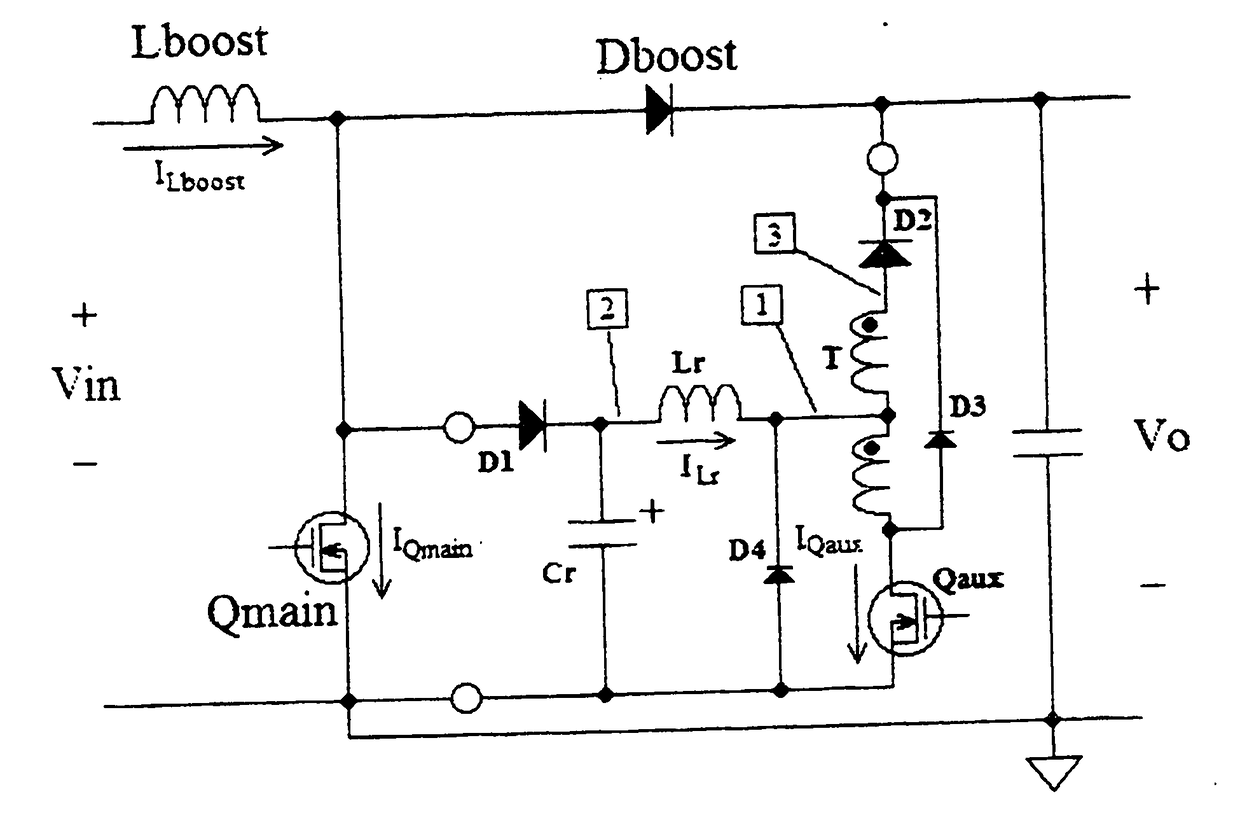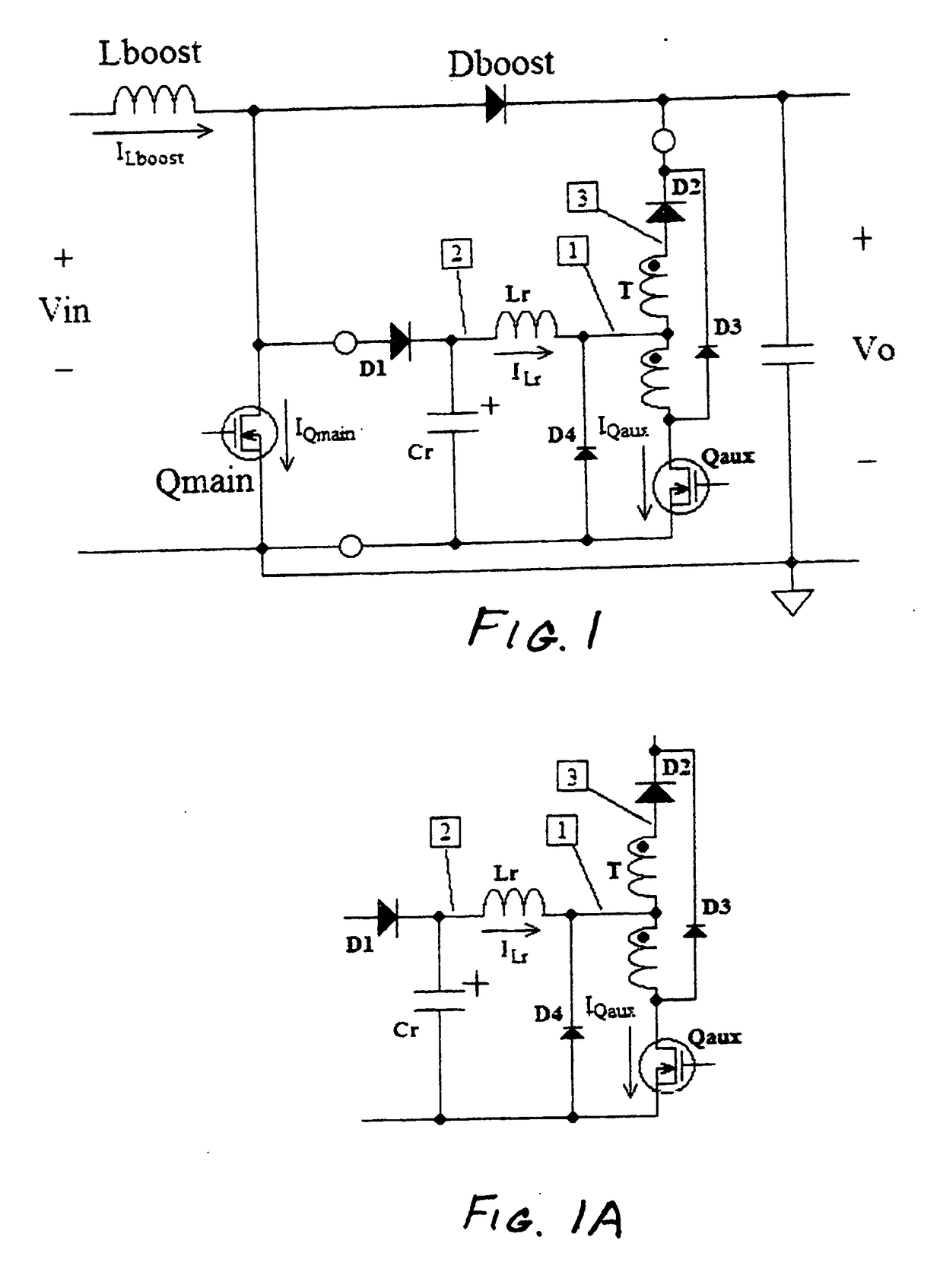Soft-switching for high-frequency power conversion
a technology of high-frequency power conversion and soft-switching, which is applied in the direction of efficient power electronics conversion, electric variable regulation, instruments, etc., can solve the problems of limiting the frequency at which the converter can be operated, limiting the ability to reduce the reactive components of the converter, and thus the size and weight of the converter, so as to reduce the rate of rise of the voltage level, improve the emi emission level, and reduce the effect of turn-off loss
- Summary
- Abstract
- Description
- Claims
- Application Information
AI Technical Summary
Benefits of technology
Problems solved by technology
Method used
Image
Examples
Embodiment Construction
[0046]FIGS. 1, 2, 3, 4, and 5 illustrates schematically embodiments of different power conversion topologies modified with a soft-switching cell (SSC) shown in FIG. 1A. The soft-switching cell includes a split inductor, a resonant inductor, a resonant capacitor, two diodes, and a controlled semiconductor. The soft-switching cell alternatively includes a transformer having isolated windings, a resonant inductor, a resonant capacitor, two diodes and a controlled semiconductor. In order to illustrate its operation, FIG. 6 shows the relevant signal waveforms relative to the boost converter shown in FIG. 1. Referring to FIG. 6, starting at a time t0 when Qmain is not conducting, Dboost is conducting, Lr carries no current and Cr is charged at a voltage equal to Vo, the output voltage. At time t1, the control logic begins the turn-on transition by driving Qaux to its conductive state. Resonant inductor Lr begins to conduct current that impinges upon the center tap of the split inductor T;...
PUM
 Login to View More
Login to View More Abstract
Description
Claims
Application Information
 Login to View More
Login to View More - R&D
- Intellectual Property
- Life Sciences
- Materials
- Tech Scout
- Unparalleled Data Quality
- Higher Quality Content
- 60% Fewer Hallucinations
Browse by: Latest US Patents, China's latest patents, Technical Efficacy Thesaurus, Application Domain, Technology Topic, Popular Technical Reports.
© 2025 PatSnap. All rights reserved.Legal|Privacy policy|Modern Slavery Act Transparency Statement|Sitemap|About US| Contact US: help@patsnap.com



